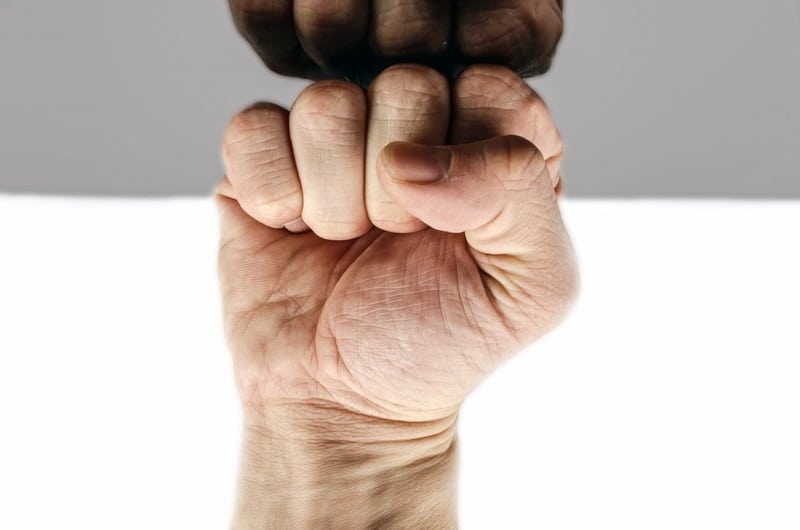I’d also add that “hopefully” we all do it. If you’re not currently breathing then please seek medical help before continuing further. Now that the bad joke is out of the way, let’s all take a deep BREATH before we continue…
Breathing is something that all of us do every day. The number of breaths per day is in the ballpark of 17,000-30,000 breaths. So, it stands to reason that making those breathing patterns as efficient as possible could be beneficial. Regarding the gym and our movement, our breathing can do a few things for us, such as:
- breathing and bracing together create stability to move heavy loads
- improves overall movement and mobility (lack of proper breathing mechanics can cause loss of motion in our hips, shoulders, etc.)
- stay alive and stuff
To quote Bill Hartman: “If you’re breathing poorly, everything else is going to be out of whack, at least to some extent.”
Now, what are we looking for in general when teaching breathing? The way I like to describe this is using the bucket analogy (not sure who I first heard it from so can’t give credit where it’s due). Imagine that your torso is a bucket and that your head and neck aren’t there. If we were to pour water into the bucket then it would fill from the bottom to the top, which is what we want our air to do. When we take a deep breath in we imagine our abdomen expanding in 360 degrees (abdomen not only pushes straight out, but all around), followed by our ribs and chest. It’s not solely diaphragmatic breathing or rib breathing, it’s both.
In the video above, I place one hand on my stomach and one on my chest to demonstrate how air expands my whole torso.
Here is a simple exercise to illustrate the importance of breathing and alignment that I’m stealing from Chris Duffin. Make sure you have enough room to stand comfortably and do the following:
- Get into a macho man position with your lower back arched and chest puffed up.
- Next, take in a huge breath of air and hold that air in for a couple seconds. Notice how that pressure feels in your torso.
- Then, repeat step 2 but start in a tall and tight position this time. How does it feel now?
Now, imagine that 200 hundred pounds were to fall on top of you and you had to catch it. Which position would you rather be in? The tall and tight one right? By setting our alignment (tall and tight) and breathing 360 degrees, we have better Intra-Abdominal Pressurization (AKA IAP, which simply means regulating our internal pressure to create stability). This gives us the best chance to catch that sucker and come out of it okay. If you were in macho man it would just fold you over and you’d have no chance. Of course, I hope none of you reading this ever have to randomly catch 200 pounds, but if you do, now you stand a better chance of not becoming a human pancake.

Contextual Breathing
Now that we understand that breathing is not done through the chest or diaphragm alone, it’s important to understand that different situations demand different breathing strategies. The following ideas below are examples of how different breathing strategies can be used in various situations.
Breathing strategies for mobility exercises and warm-ups/cool-downs
At BSP NOVA we usually have our clients doing mobility exercises for a prescribed number of breaths. For example, during a Lumbar Locked T-Spine Rotation we will have someone rotate as high as they can, and then hold that position while taking 3-5 deep breaths. They breathe in deep through the nose and exhale out of their mouths as if they are “fogging glass.” This strategy can be thought of as “relaxing into stretch,” to use a phrase popularized by Pavel. It allows us to gain more motion during the exercise but also start to “own” the position better. If we had people doing hard shallow breaths then they would create more rigidity than desired, and therefore limit their range of motion.
Breathing strategies during ballistic/power movements
When doing power work, we use a fast exhale as if we’re mimicking the fast movement we are doing. This exhale can be thought of as a “punching/pulsing” exhale and is used to quickly increase IAP to help transfer force. This is the type of breathing we will normally use when doing medicine ball power work, kettlebell swings, etc., with the exception being heavy Olympic lifts.
Breathing strategies during heavy lifts
In general, we use “heavy” to describe compound movements of roughly 6 reps or less, and usually at an RPE of 7-9 (RPE = Rating of Perceived Exertion which has to do with how hard the set is). During these heavy sets, assuming we don’t have high blood pressure issues, then we will actually hold our breaths for a part of the set. By holding our breath, we further increase the IAP I spoke of earlier. To use a heavy squat as an example, we would take a big breath in right before we descend, and hold that breath in. Then, on the way up after we know we are going to complete the rep, we let a little bit of the air out. Important to note is that we take a fresh breath every rep and don’t hold it for a prolonged period.
Let’s revisit that Bill Hartman’s Quote from earlier: “If you’re breathing poorly, everything else is going to be out of whack, at least to some extent.”
Taking the time to learn different breathing strategies globally effects our movement. Breathing is something we do thousands of times a day, so why not take the time to make sure we’re using the strategies that put us in the best position to be successful?
